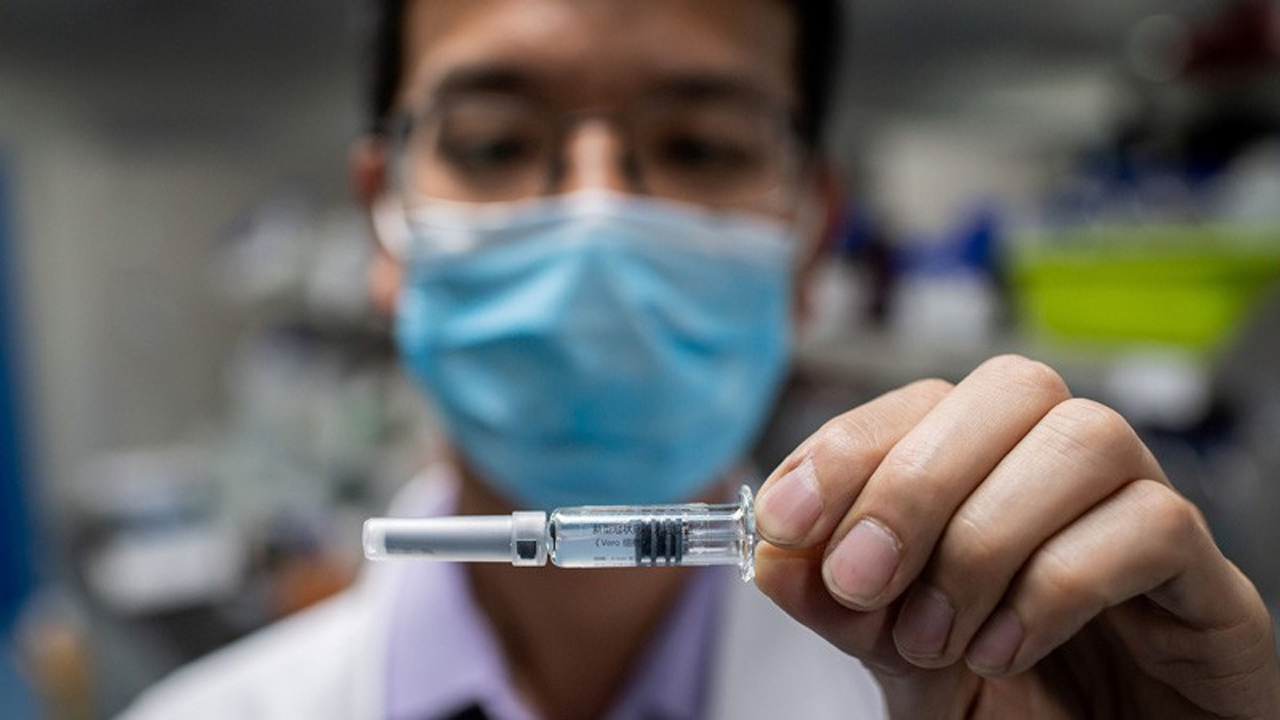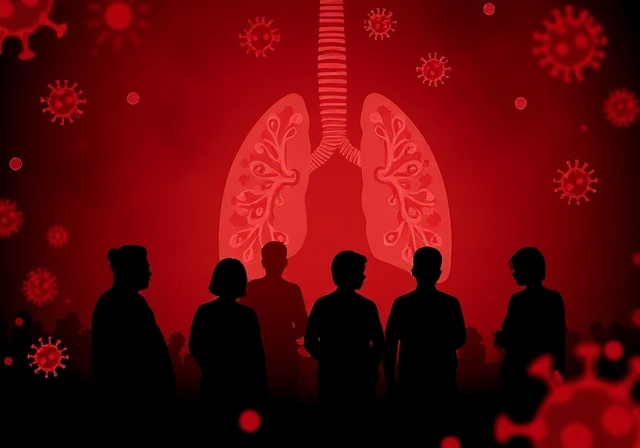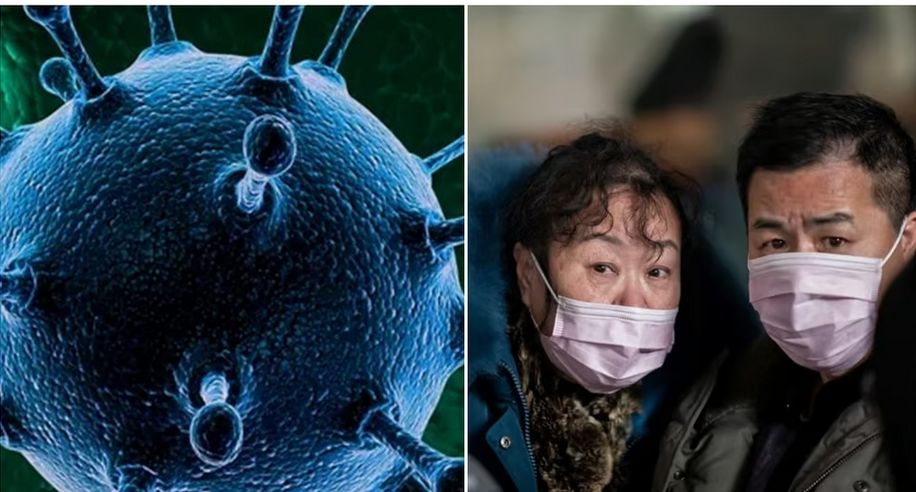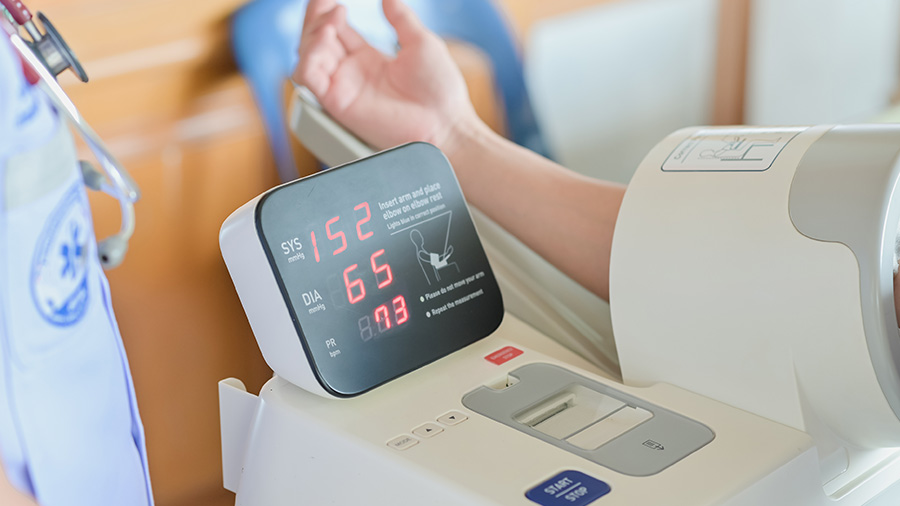Results from an early-phase randomised clinical trial of a Chinese vaccine candidate based on the inactivated whole SARS-CoV-2 virus (CoronaVac) are published today in The Lancet Infectious Diseases journal, finding the formulation appears safe and induces an antibody response in healthy volunteers aged 18 to 59 years.
Antibody responses could be induced within 28 days of the first immunisation, by giving two doses of the vaccine candidate 14 days apart.
The study also identifies the optimum dose to generate the highest antibody responses, while taking account of side effects and production capacity, is 3µg, and this will be studied further in phase 3 trials that are already underway.
The mean neutralising antibody titres induced by CoronaVac ranged from 23.8 to 65.4, which were lower than levels seen in people who have previously had COVID-19 (average level of 163.7). However, the researchers still believe CoronaVac could provide sufficient protection against COVID-19 based on their experience with other vaccines and data from their preclinical studies with macaques.
The trial was not designed to assess efficacy, and findings from phase 3 studies will be crucial for determining if the immune response generated by CoronaVac is sufficient to protect from SARS-CoV-2 infection. Additionally, the persistence of the antibody response needs to be verified in future studies to determine how long-lived any protection might be. Finally, the study only included healthy adults aged 18 to 59 years and further studies will be needed to test the vaccine candidate in other age groups, as well as in people who have pre-existing medical conditions.
Professor Fengcai Zhu, joint lead author of the study, from the Jiangsu Provincial Center for Disease Control and Prevention, Nanjing, China, said: “Our findings show that CoronaVac is capable of inducing a quick antibody response within four weeks of immunisation by giving two doses of the vaccine at a 14 day interval. We believe that this makes the vaccine suitable for emergency use during the pandemic. In the longer term, when the risk of COVID-19 is lower, our findings suggest that giving two doses with a one month interval, rather than a two week interval, might be more appropriate for inducing stronger and potentially longer-lasting immune responses. However, further studies are needed to check how long the antibody response remains after either vaccination schedule.”
CoronaVac is one of 48 vaccine candidates for COVID-19 that are currently in clinical trials. It is a chemically-inactivated whole virus vaccine based on a strain of SARS-CoV-2 that was originally isolated from a patient in China.
The phase 1/2 clinical trial was carried out in the Suining County of Jiangsu province, China. All participants were aged 18 to 59 years and only people who did not have any history of infection with COVID-19, had not travelled to areas with high incidence of the disease, and did not have signs of fever at the time of recruitment were included in the study.
In the first phase, 144 healthy volunteers were enrolled between 16 April and 25 April 2020. Participants were split into two groups to receive one of two vaccination schedules – either two injections given 14 days apart (day 0 and 14 schedule), or two injections given 28 days apart (day 0 and 28 schedule).
Within each of the two groups, participants were randomly assigned to receive either a low dose of the vaccine (3µg, 24 participants), a high dose (6µg, 24 participants) or placebo (24 participants). In total, in this first phase, 96 participants received two doses of CoronaVac and 47 received the placebo (one participant withdrew from the placebo group). Antibody levels were checked 14 days and 28 days after the final immunisation.
For the first seven days after each dose, participants used paper diary cards to record any side effects they experienced, such as pain or redness at the injection site, or body-wide symptoms such as fever or cough. Serious adverse events were collected throughout the study and until six months after the last dose.
In the phase 1 trial, the overall incidence of adverse reactions was similar in the low- and high-dose groups at both vaccination schedules, indicating no dose-related safety concerns (for the day 0 and 14 schedule: 7/24 [29%] participants given the 3µg dose experienced reactions; 6µg dose, 9/24 [38%); placebo group, 2/24 [8%]. Day 0 and 28 schedule: 3µg dose, 3/24 [13%]; 6µg dose, 4/24 [17%); placebo group, 3/23 [13%].)
Most of the reported side effects were mild and participants recovered within 48 hours, with the most common symptom being pain at the injection site (Day 0 and 14 schedule: 3µg dose, 4/24 [17%] participants; 6µg dose, 5/24 [21%); placebo group, 1/24 [4%]. Day 0 and 28 schedule: 3µg dose, 3/24 [13%]; 6µg dose, 3/24 [13%); placebo group, 3/23 [13%].)
There was one case of severe allergic reaction within 48 hours of receiving the first dose in the 6µg group of the day 0 and 14 vaccination schedule (1/24, 4%). This was considered to be possibly related to vaccination. However, the participant was treated and recovered within three days, and did not experience a similar reaction after the second dose of vaccine.
Phase 2 of the trial was initiated when all participants in phase 1 had finished a 7-day observation period after their first dose. Some 600 healthy volunteers were enrolled in the study between 3 May and 5 May 2020. Again, participants were separated into two groups for the 14-day and 28-day vaccination schedule and then randomly assigned to receive either a low dose of the vaccine (3µg, 120 participants), a high dose (6 µg, 120 participants) or placebo (60 participants). In total, in this first phase, 480 participants received at least one dose of CoronaVac. Five participants withdrew from the second phase of the study: 2 withdrew voluntarily, 2 withdrew owing to lockdown restrictions and 1 person moved location.
Between the phase 1 and phase 2 trials, the researchers changed the manufacturing process of the vaccine to increase production capacity. There was no difference in reported side effects, however, the immune responses were much stronger in the second phase of the study after the new process was introduced (Mean neutralising antibody titres 14 days after final immunisation with two 3µg doses on day 0 and 14 schedule: phase 1, 5.6; phase 2, 27.6). In addition, the proportion of participants producing antibodies to SARS-CoV-2 was higher after the new process was introduced (Number of participants producing antibodies to SARS-CoV-2 14 days after final immunisation of day 0 and 14 schedule with 3µg dose: phase 1, 11/24 [45.8%]; phase 2, 109/118 [92.4%]),
After investigation, the researchers found that the new manufacturing process resulted in greater number of intact spike proteins on the surface of the inactivated virus that makes up the vaccine, which is thought to be a key molecule that the immune system uses to recognise the virus.
Overall, the researchers found the 0 and 28 schedule induced the strongest antibody responses (Mean neutralising antibody titres 28 days after final immunisation: Day 0 and 14 schedule: 3 µg, 23.8; 6 µg, 30.1; Day 0 and 28 schedule: 3 µg, 44.1; 6 µg, 65.4).
However, even at the highest levels, antibodies induced by the CoronaVac vaccine candidate were lower than those that have been observed in patients who have recovered from COVID-19 (Mean neutralising antibody titres: CoronaVac, 65.4; COVID-19 patients, 163.7).
Dr Gang Zeng, one of the authors of the study, from Sinovac Biotech, Beijing, China, said: “CoronaVac is one of many COVID-19 vaccine candidates that are being explored in parallel. There are a multitude of different vaccine technologies under investigation, each with their own advantages and disadvantages. CoronaVac could be an attractive option because it can be stored in a standard refrigerator between 2 and 8 degrees centigrade, which is typical for many existing vaccines including flu. The vaccine may also remain stable for up to three years in storage, which would offer some advantages for distribution to regions where access to refrigeration is challenging. However, data from phase 3 studies will be crucial before any recommendations about the potential uses of CoronaVac can be made.”
The authors note several limitations to their study. The phase 2 trial did not assess T cell responses, which are another arm of the immune response to virus infections. This will be studied in ongoing phase 3 studies.
Writing in a linked Comment, Dr Naor Bar-Zeev, from Johns Hopkins University, who was not involved in the study, said: “Like all phase 2 trials, the results must be interpreted with caution until phase 3 results are published. But even then, after phase 3 trial completion and after licensure, we should prudently remain cautious.”

 The Lancet Infectious Diseases: Chinese vaccine candidate based on inactivated SARS-CoV-2 virus appears safe and induces an immune response in healthy volunteers, preliminary study finds
The Lancet Infectious Diseases: Chinese vaccine candidate based on inactivated SARS-CoV-2 virus appears safe and induces an immune response in healthy volunteers, preliminary study finds








.jpg)












.jpeg)

.jpeg)










.jpg)




.jpg)

